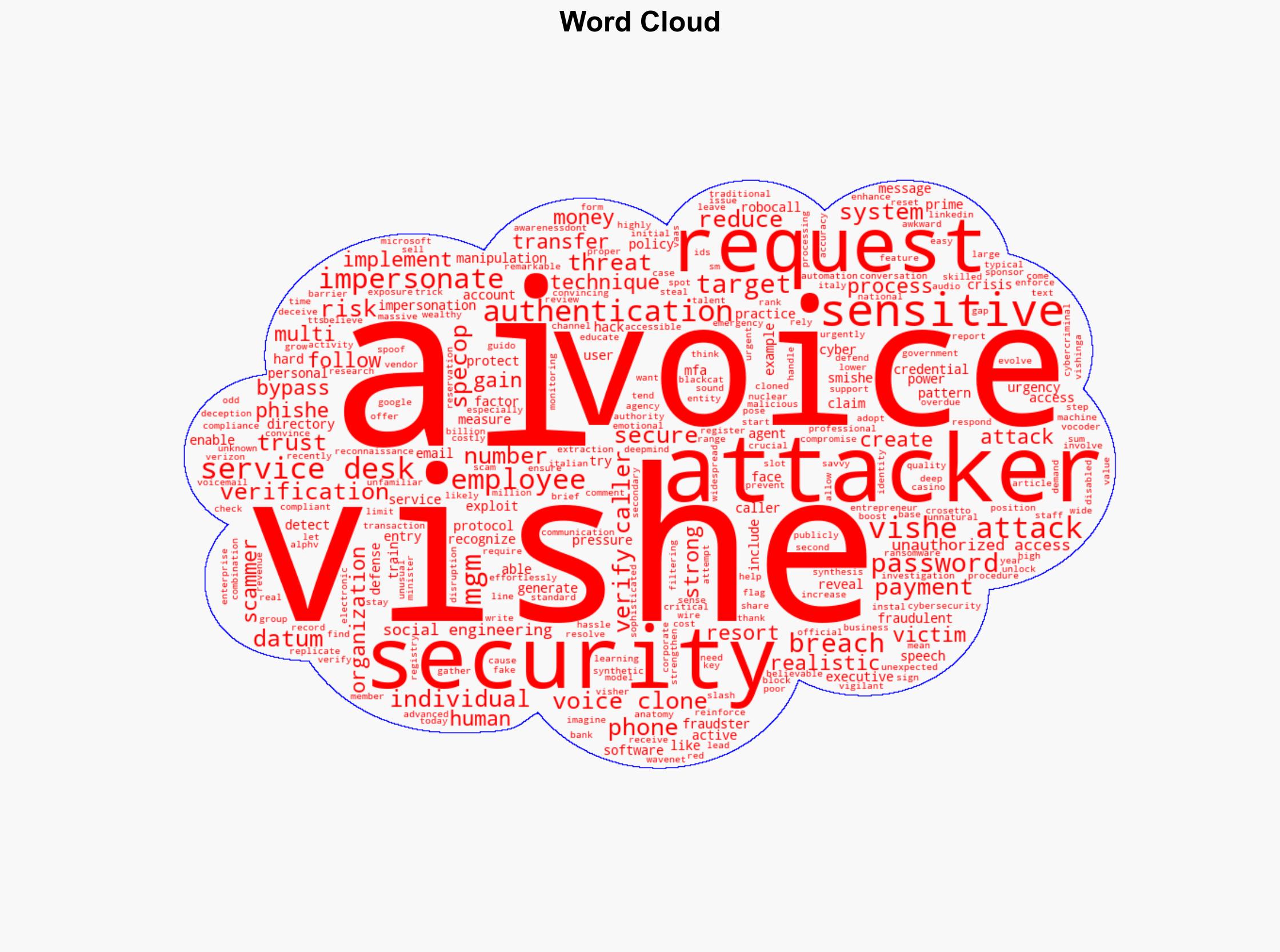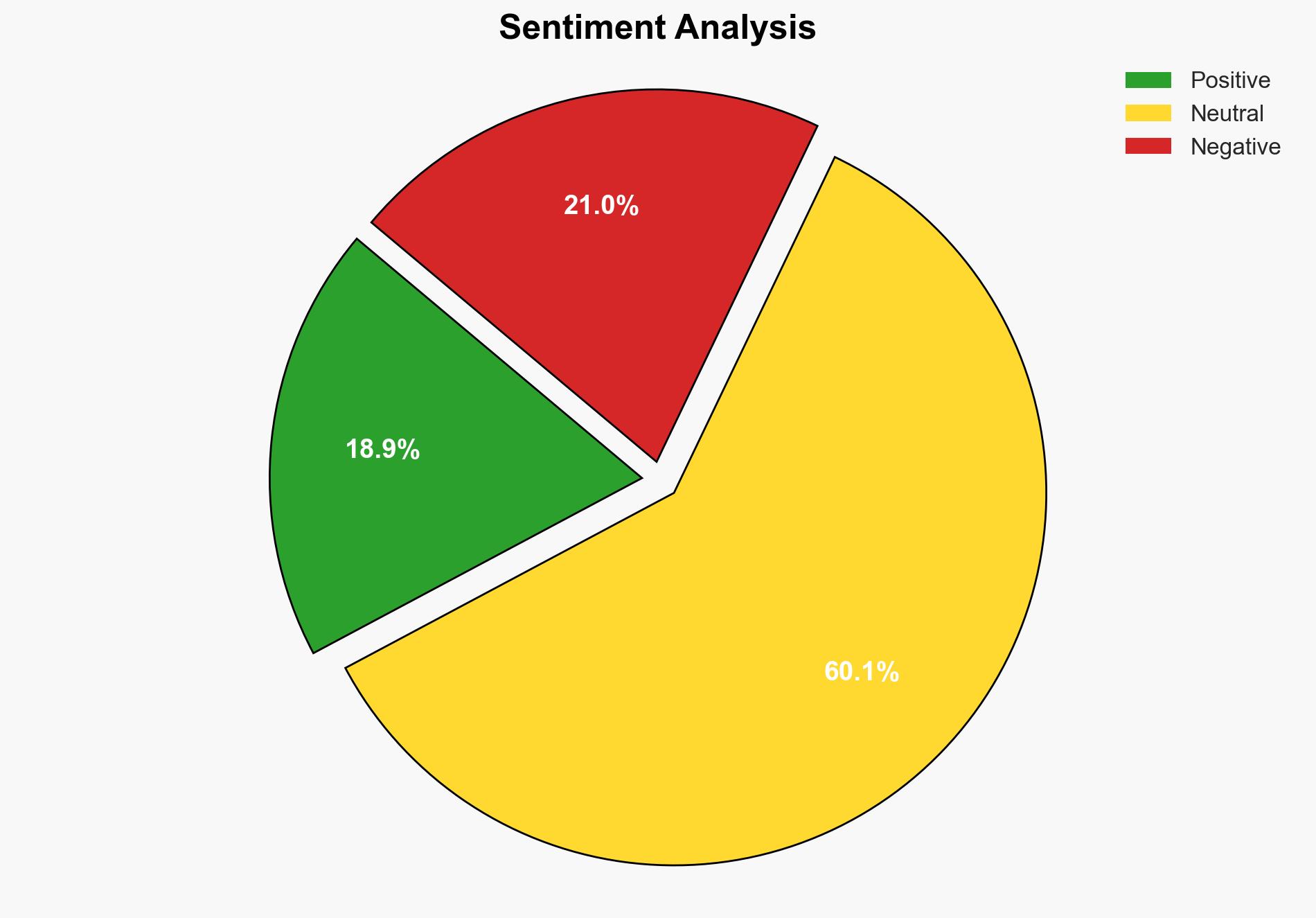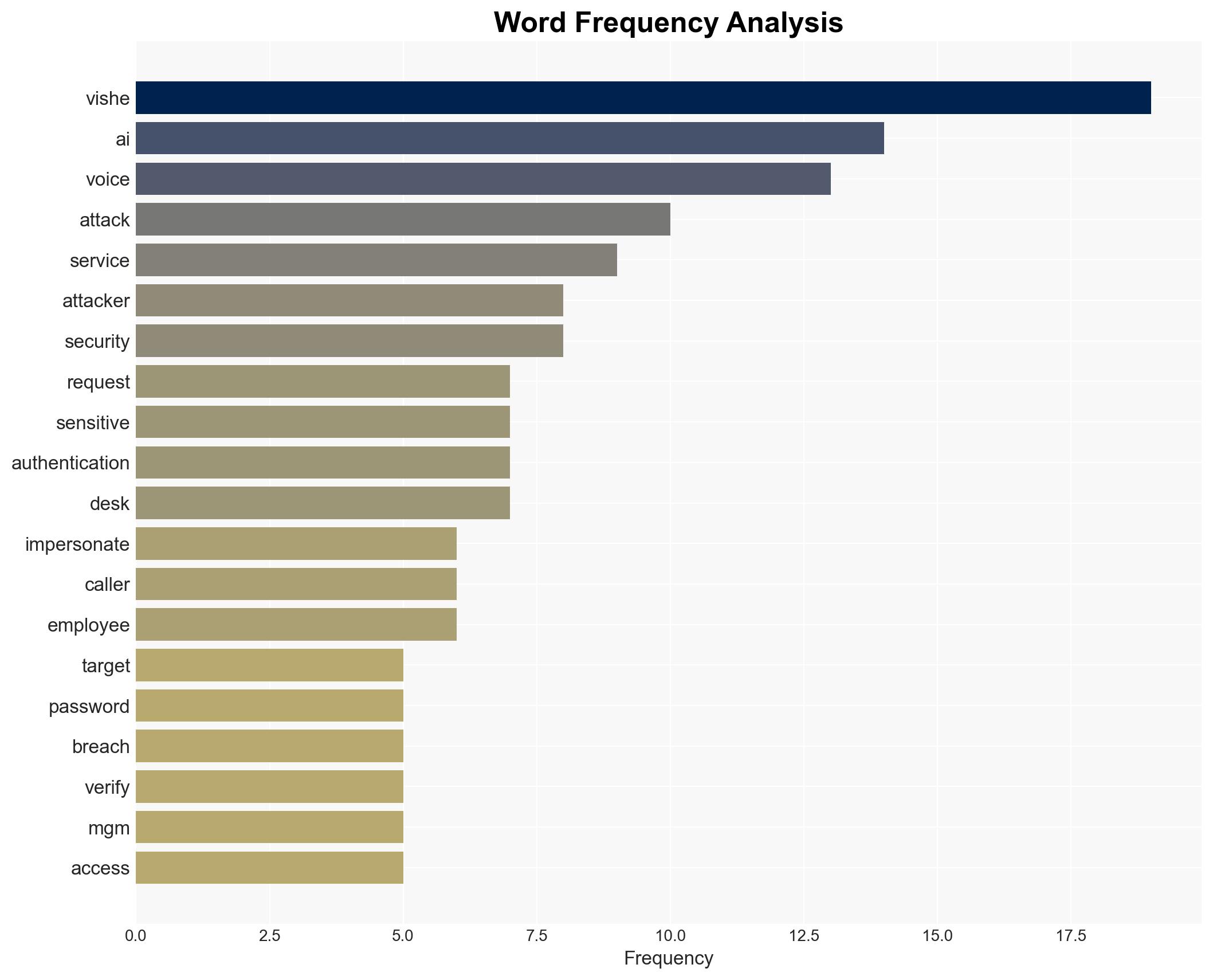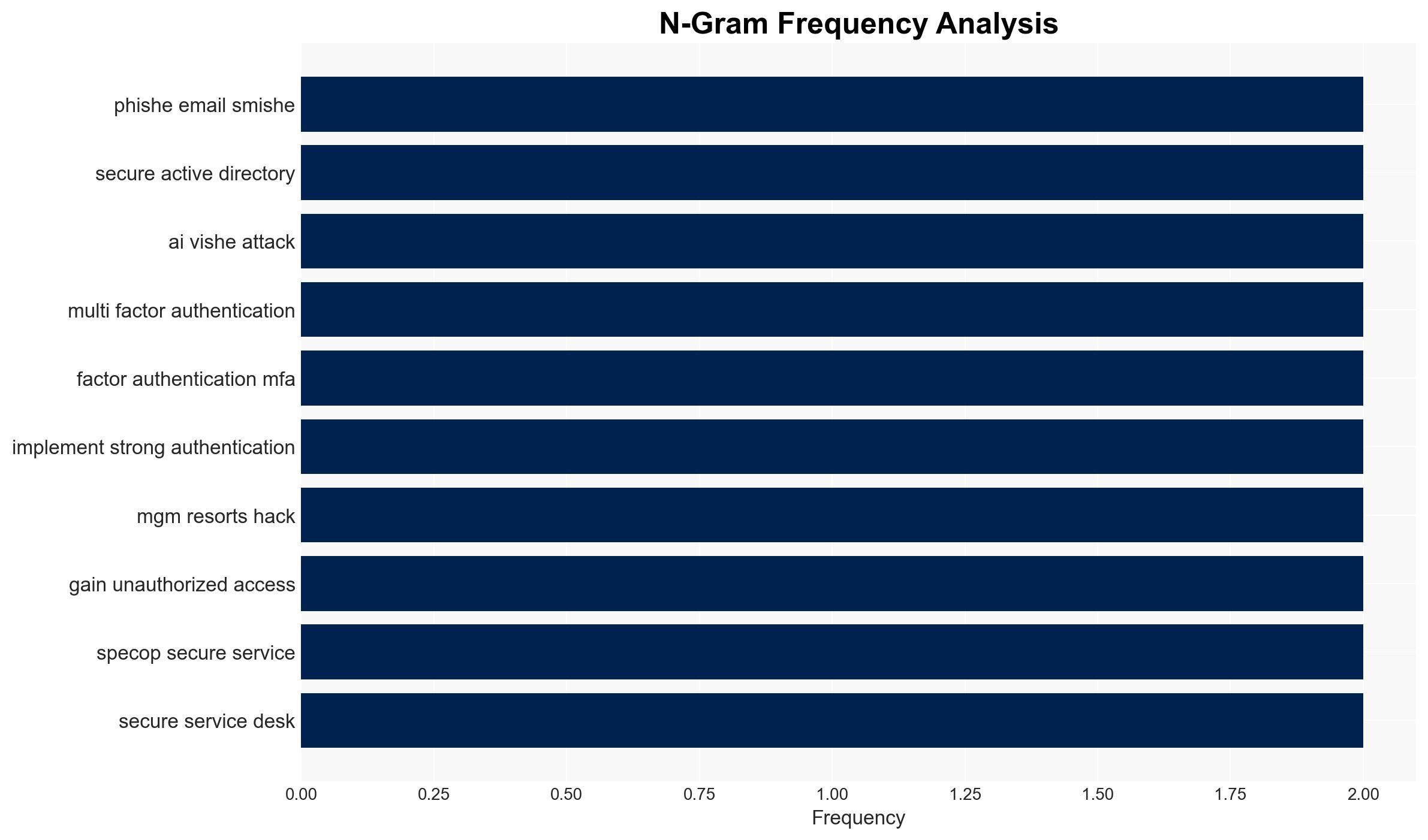Who’s calling The threat of AI-powered vishing attacks – BleepingComputer
Published on: 2025-04-09
Intelligence Report: Who’s calling The threat of AI-powered vishing attacks – BleepingComputer
1. BLUF (Bottom Line Up Front)
The increasing sophistication of AI-powered vishing attacks poses a significant cybersecurity threat. Attackers are using advanced AI techniques to clone voices and deceive individuals into revealing sensitive information or making fraudulent payments. This report highlights the growing risks and provides strategic recommendations to mitigate these threats.
2. Detailed Analysis
The following structured analytic techniques have been applied for this analysis:
General Analysis
AI-powered vishing attacks, or voice phishing, are evolving rapidly due to advancements in AI technology. Attackers can now generate highly convincing synthetic voice clones using text-to-speech synthesis and deep learning models. This technology enables scammers to impersonate trusted individuals or entities, such as bank officials or government representatives, with remarkable accuracy. The process typically involves:
- Reconnaissance: Gathering personal information about the target.
- Spoofing: Using AI-generated voice and fake caller IDs to impersonate trusted entities.
- Manipulation: Creating a sense of urgency to pressure victims into compliance.
- Extraction: Coercing victims to reveal credentials, transfer money, or install malicious software.
The accessibility of AI tools and services, such as voice cloning and robocall automation, lowers the barrier to entry for cybercriminals, potentially increasing the frequency and sophistication of vishing attacks.
3. Implications and Strategic Risks
The rise of AI-powered vishing attacks presents several strategic risks:
- National Security: Potential exploitation of government communication channels and impersonation of officials.
- Regional Stability: Increased risk of fraud and misinformation campaigns targeting critical infrastructure.
- Economic Interests: Financial losses for businesses and individuals due to fraudulent transactions.
The integration of AI in cybercrime may lead to more sophisticated and harder-to-detect attacks, challenging existing cybersecurity defenses.
4. Recommendations and Outlook
Recommendations:
- Enhance authentication measures, including multi-factor authentication, to verify caller identities.
- Implement employee education programs to raise awareness about the signs of vishing attacks.
- Encourage regulatory bodies to establish guidelines for AI usage in communication technologies.
- Invest in AI-driven security solutions to detect and counteract AI-powered threats.
Outlook:
Best-case scenario: Organizations adopt robust security measures and public awareness increases, reducing the impact of vishing attacks.
Worst-case scenario: Cybercriminals continue to innovate, leading to widespread financial and reputational damage.
Most likely scenario: A gradual increase in vishing attacks with varying degrees of success, prompting ongoing adaptation of security strategies.
5. Key Individuals and Entities
The report mentions Guido Crosetto as a target of impersonation in a vishing attack. No roles or affiliations are provided.




